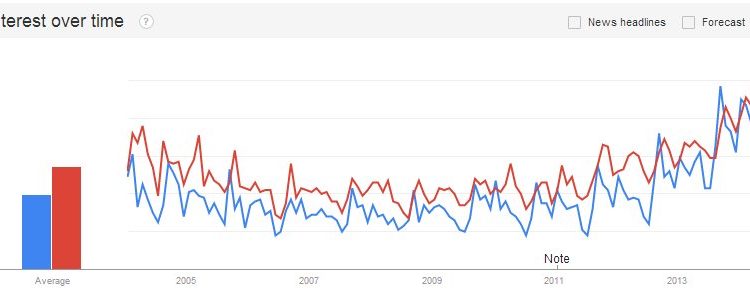Do campo para seu Churrasco
Domingo é dia de um bom churrasco, e quando possível, com aquele cardápio variado estrelando a linguicinha dos processadores de suínos de Santa Catarina, a picanha das gigantes multinacionais da carne do Mato Grosso, quem sabe até com alguns acompanhamentos e petiscos de uma das inúmeras cooperativas de laticínios que existem ao redor do país.
Esses heróis da economia nacional, além da produção das delícias que chegam à nossa mesa, também são responsáveis por acrescentar mais de R$1,7 trilhões de reais (Trilhão, com “T” mesmo) ao PIB brasileiro.
E o mais impressionante é que este número segue crescendo apesar das várias barreiras políticas, das falhas históricas em nossa infraestrutura e de uma recente pandemia.
Mas aí você me pergunta, o que churrasco, SAP e Ciência de Dados tem a ver?
Então vamos lá! É muito sobre ajudar essas empresas a sobrepor os desafios de tomada de decisão que cadeias de suprimentos, super complexas como estas, tem em seu dia-a-dia.
Montagem ou Desmontagem?
Pequenas e grandes indústrias têm tentado se utilizar de sistemas cada vez mais avançados de suporte à produção, a fim de enfrentar essas inúmeras adversidades.
E este tipo de tecnologia aplicada na agricultura, horticultura e aquicultura com o objetivo de melhorar o rendimento, a eficiência e a lucratividade é o que chamamos de Agritech.
Mas apesar de conhecerem muito sobre seu negócio e cada detalhe de seu mercado, elas ainda encontram bastante dificuldade quando estas gigantes do mundo dos softwares tentam suprir suas expectativas e necessidades específicas de negócio.
Sabemos que o tamanho da operação pode mudar, mas que, geralmente, em todas as Indústrias, as obrigações fiscais e contábeis são as mesmas, e os desafios na área de marketing e de RH para alcançar seus resultados são bem parecidos.
Mas é exatamente aí que termina a semelhança entre as Indústrias baseadas em matéria-prima Agropecuária e Indústrias de outros setores como as gigantes automotivas ou as grandes farmacêuticas.
Enquanto todas as demais indústrias lidam com a Montagem de elementos para chegar a um produto final, a indústria de proteínas (laticínios, carne suína, carne bovina, aves, etc..) lida com a Desmontagem de uma matéria prima única em diversas possibilidades de produto final.
Por exemplo, um fabricante de televisores trabalha na aquisição de chips, plásticos e peças, com base no tipo de TV que planeja produzir.
Já em um Frigorífico de Suínos, o desafio será o de transformar cada animal que entra na fábrica em múltiplas possibilidades de alimento de qualidade, com o menor desperdício possível e garantindo produtos frescos e de qualidade no supermercado mais próximo de seus consumidores.
E onde o SAP entra nessa?
O SAP é uma sólida ferramenta ERP que pode ser implementada, tanto nas indústrias de manufatura de médio, como nas de grande porte. Ele atende às necessidades de quase todos os tipos de Indústria, podendo até ser utilizado em sua versão padrão em uma vasta gama de processos de negócio.
E juntamente com suas licenças adicionais para HCM, BI, EWM, PO, TM, GTS e outros componentes (os experts em SAP já estão familiarizados com estas siglas), o SAP pode oferecer uma plataforma de dados unificada e melhorar bastante o acompanhamento consolidado de suas regras de negócio.
Mas apesar de oferecer o MRP e recursos avançados de planejamento de produção, o SAP se limita apenas em ajudar com algumas restrições específicas da Indústria de Desmonte.
Por ter seu foco muito forte em processos baseados em regras fixas, que são definidos como padrão e se encaixam em um roteiro de aplicação pré existente, o SAP algumas vezes falha ao lidar com as complexidades de mudanças repentinas de suprimentos, variabilidade de preços de commodities ou influências externas como a de uma pandemia.
Se por um lado vale muito a pena padronizar os processos, de outro também vale controlar os detalhes que te fazem diferente e melhor do que os outros, especialmente nessa corrida diária contra o Shelf-life, e é neste ponto que o SAP mais precisa de ajuda.
Juntando Forças
Nos últimos 15 anos, tenho trabalhado em adaptar o sistema SAP às necessidades dos clientes da Indústria de Desmonte ao redor do mundo, principalmente nas Indústrias da Frigoríficos e Laticínios.
Sou defensor ferrenho de que você precisa de sistema ERP como parte de seu stack tecnológico, mas o que tenho para te falar é: não acredite, nem por um segundo, que nem mesmo a última versão de um SAP-HANA irá fornecer-lhe a heurística necessária para te tornar um líder de mercado, porque você certamente vai precisar de um motor mais robusto de ciência de dados avançada em conjunto com o seu ERP, para alcançar este patamar.
10 coisas que você precisa saber
Cada vez mais, clientes SAP estão preferindo complementar seus sistemas com motores mais robustos de ciência de dados, muito pela flexibilidade que estas plataformas têm de lidar com as complexidades de suas empresas, cobrindo desde a rotina de planejamento de produção, até a integração total de decisões de toda a cadeia de suprimentos.
Abaixo, listo onde estão estes benefícios e o porquê desta decisão ser cada vez mais comum neste tipo de Indústria:
- O Poder e a Flexibilidade da Nuvem: Começo pelo poder ilimitado da nuvem e todas as suas inerentes facilidades, o que deixa as restrições de integração SAP já não são mais consideradas um fator limitador.
- Adiciono a capacidade de otimização avançada e modelagem independente de dados (discreta, repetitiva ou combinação) que estes sistemas trazem, não importando qual seja a sua configuração SAP.
- Não há limites para as restrições que você precisa configurar no seu modelo, a otimização em nuvem independente da Austin Data Labs, por exemplo, pode modelar a sua linha de produção de maneira precisa e sem os custos exorbitantes de uma implementação do SAP-APO.
- Nós sabemos que seus planos podem mudar a cada dia, então ter a capacidade de fazer as mudanças necessárias nas configurações de capacidade ou transferir os planos de uma planta para outra sem precisar contratar consultores ou pagar horas de desenvolvimento SAP, é muito importante!
- Ter de compartilhar os dados da sua empresa em LBN, só porque a SAP deixou de sustentar as ferramentas caras que vendeu no ano passado, deixa de ser um problema
- Usufruir do poder da ciência de dados sem ter que pagar pelo SAP-Leonardo, passa a ser um benefício
- Levar a inovação para o chão de fábrica! Ter as informações e os dashboards que sua operação precisa, de qualquer lugar e sem precisar gastar com as customizações Fiori e Tile, é uma boa vantagem
- Obter um RPO e RTO compatíveis com o seu negócio, sem necessidade de taxa de suporte.
- Otimizar, Otimizar e Otimizar! Executar seus modelos como e quando achar necessário, sem se preocupar que isso possa derrubar todo o sistema.
- E, finalmente, poder suportar melhores decisões para que você possa continuar impulsionando os seus negócios.
Estamos aqui se precisar! Teremos muito prazer em ajudá-lo a encontrar a solução mais adequada para seus problemas de otimização de planejamento e integração das decisões de sua cadeia de suprimentos.
Post traduzido em Fev/2021. Texto Original aqui
Quer conhecer um pouco mais sobre como utilizamos estes conceitos para encontrar oportunidades de margem em seu negócio? Clique aqui




